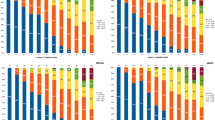Abstract
A new program ACSBAIA (Active Conformation Search Based on Active and Inactive Analogues) for determination of the active conformations was developed based on the rationales that specific functional groups of active analogues could reach and interact with the active site of target receptor by means of the change of conformations, but that of inactive analogues could not interact with the active site owing to conformational restriction. The program consisted of 4 sub-programs: conformation sampling system, active conformation constraint system, inactive conformation exclusion system, and activity prediction system. Pharmacophoric conformation of allylamine antimycotics was studied by this method. Activities of 2 analogues were predicted and tested. The results suggested that the method was scientific and practical. The application of this method was not restricted by the three-dimensional structural knowledge of target receptor. In the absence of structural information about the receptor, the method was particularly applicable.
Similar content being viewed by others
References
Jiang, H. L., Chen, K. X., Chen, J. Z. et al., Binding conformers searching method for ligands according to the structures of their receptors and its application to thrombin inhibitors,Science in China (in Chinese), Ser. B, 1997, 27: 411.
Stutz, A., Synthesis and stmcture-activity correlations within allylamine antimycotics,Anna1. N. Y. Acad. Sci., 1988, 544: 46.
Stutz, A., Georgopoulos, A., Granitzer, W. et al., Synthesis and structure-activity relationships of naftifine-related allylamine antimycotics,J. Med. Chem., 1986, 29: 112.
Fawe, B., Ryder, N. S., Cloning and expression of squalene epoxidase from the pathogenic yeastCandida albicans, Gene, 1997, 189: 119.
Ji, H. T., Zhang, W. N., Zhou, Y. J., et al., Comparative molecular field analysis (CoMFA) of allylamine and benzylamine antimycotics,Acta Phameutica Sinica (in Chinese), 1998, 33: 188.
van Gunsteren, W. F., Berendsen, H. J. C., Computer simulation of molecular dynamics: methodology, applications and perspectives in chemistry,Angnu. Chem. Int. Ed. Engl., 1990, 29: 992.
Rooman, M. J., Rodriguez, J., Wodak, S., Automatic definition of recurrent local structure motifs in proteins,J. Mol. Biol., 1990, 213: 327.
Author information
Authors and Affiliations
Additional information
Project supported by the National Natural Science Foundation of China (Grants Nos. 39770876 and 39470830), and Ninth Five-Year-Plan Key Research Project of PLA, China.
Rights and permissions
About this article
Cite this article
Zhang, W., Ji, H., Zhou, Y. et al. A method of active conformation search based on active and inactive analogues and its application to allylamine antimycotics. Sci. China Ser. C.-Life Sci. 42, 538–547 (1999). https://doi.org/10.1007/BF02881778
Received:
Issue Date:
DOI: https://doi.org/10.1007/BF02881778




